It’s not hard to grow lettuce, and everyone should really give it a try. You can grow it in containers, in a window box, or tucked unassumingly among flowers.
It’s fast growing, and with a little planning, you can have a crop all spring, and again in fall.
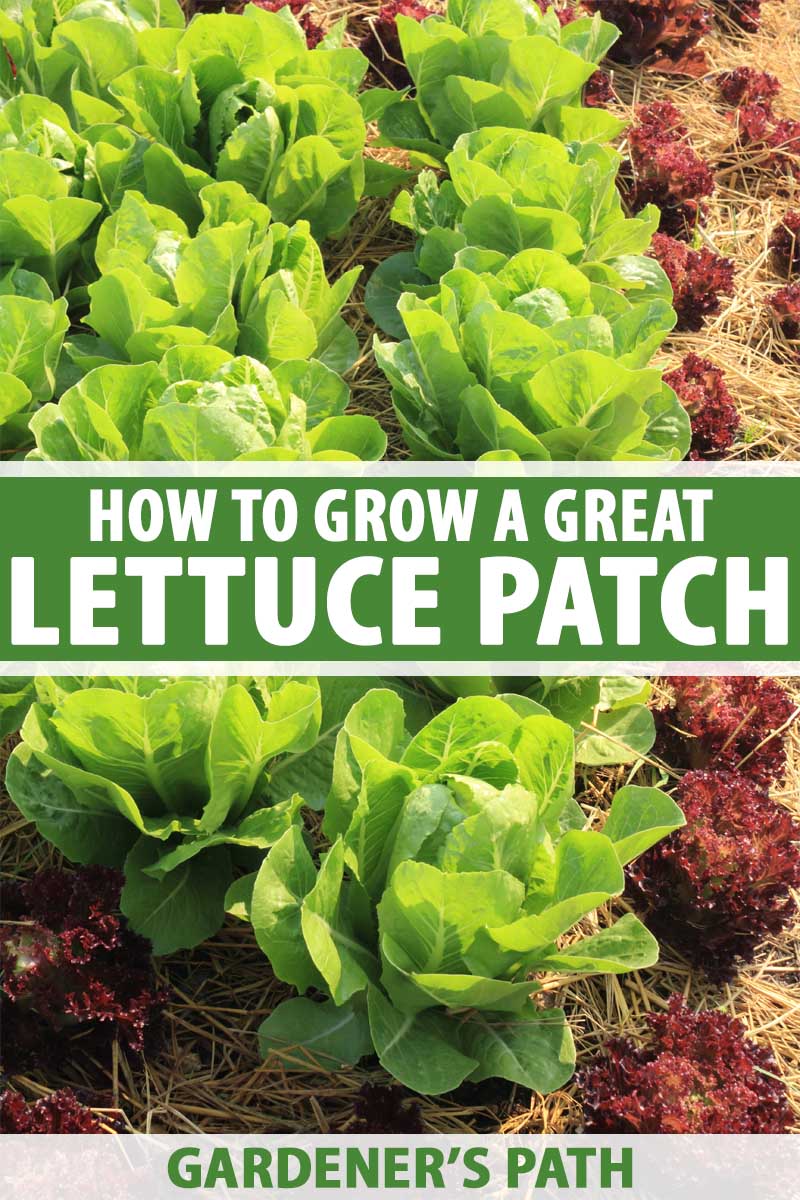
We link to vendors to help you find relevant products. If you buy from one of our links, we may earn a commission.
There are many different varieties, and with each comes slightly different growing requirements, and tips to keep in mind. But we’re here to help you out! Here’s what’s ahead in this guide:
How to Grow Lettuce at Home
Ready to learn how to grow your own? Let’s get started!
Keep It Cold
It’s funny that big strapping pumpkins and acorn squash are fragile little babies and something as delicate as lettuce is considered hardy.
As such, this cold-hardy, leafy vegetable grows best when temperatures fall somewhere between 45 and 80°F.
That means you need to plant your crop when it’s still quite chilly in the spring and/or in the fall, after the heat of summer has dissipated.
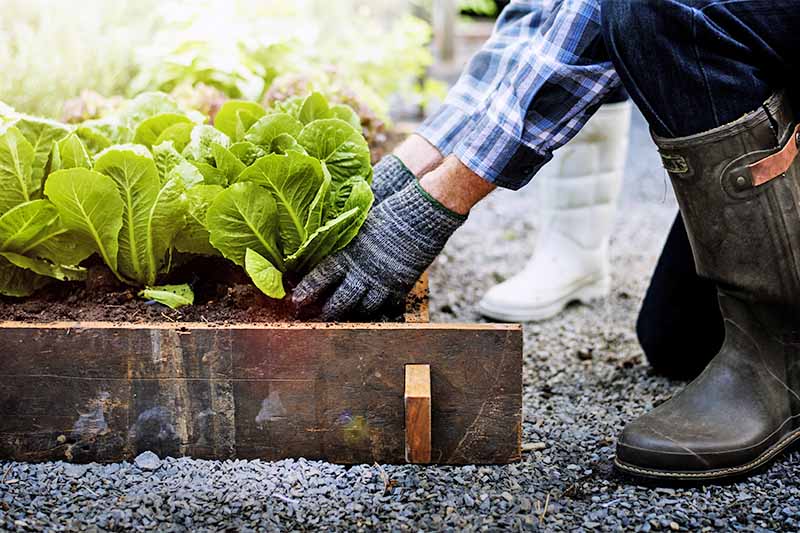
However, that doesn’t mean you have to go without fresh lettuce during the dog days of summer. In a sunny window, you might even have some success growing it indoors in the air conditioning. And row covers can also help to keep slow-bolt varieties cool.
Once you taste fresh picked, it will be hard for you to go back to buying the stuff in the grocery stores.
Variety of Types, Variety of Tastes
There are four main types of lettuce, based on growth habit.
Loose leaf is in a category all its own.
Then there are the head lettuces: butterhead, romaine or cos, and crisphead.

And each type offers a plethora of varieties, bringing an array of qualities and flavors to the table.
Read on for the details.
Loose Leaf
Loose leaf lettuce, which refers to varieties that don’t form any type of head, is considered the easiest to grow.
It matures in 40-45 days, but no need to wait that long to enjoy it! You can start thinning (and eating the trimmings) in as little as three weeks.
Leaf lettuce grows up a single stalk and the outer leaves are harvested with scissors or a sharp knife, 1-2 inches above the ground. The stalk will produce more leaves, which you can continue to eat.

Loose leaf is the least prone to bolt (go to seed) in hot weather and also has the highest nutritional value. And while it has a stronger taste than iceberg, most foodies agree that after you get used to it, you can’t go back. Iceberg is watery and bland in comparison.
Loose leaf varies in color from red to green, with the texture either curly or ruffled.
A few likely familiar names in this category include arugula, endive, and mesclun.
Read more about growing leaf lettuce here.
Butterhead
Of the head-forming lettuces, butterhead is considered to be a loose-heading type because the leaves don’t form tight, hard heads, like iceberg.
Instead, it forms soft, loose heads that taste “buttery,” hence the name.
Leaves are tender and often mild but flavorful. And plants overall are smaller and more stout than the upright head and cos types.
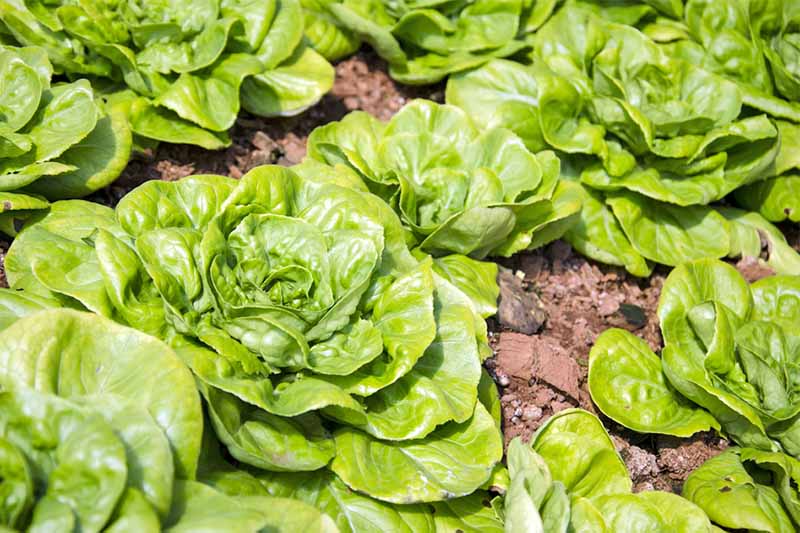
Butterheads often do better in cooler temperatures, and may develop a bitter taste quickly once the heat arrives, although heat tolerance will vary quite a bit depending on variety.
Boston, bibb, and buttercrunch are a few of the most popular varieties.
When to harvest depends largely on variety as well, as quick maturing types can be ready to pick in as little as 35 days. Others might take up to 70 days.
So, if you have a small window of cool weather to work with, look for a fast-maturing butterhead that is less likely to bolt.
As a first go, head over to True Leaf Market and give buttercrunch a try. It’s a great option for beginners that tends to do well.
Butterheads are flexible in terms of harvesting. You can wait until it reaches maturity and harvest the entire plant at once, or harvest individual leaves as desired while it grows.
I prefer the latter option. To do this, just focus on harvesting the outside leaves when they reach a good size.
The plant will continue to produce new leaves from the center.
When the heat arrives, cut the whole plant off just above the soil.
Romaine
Romaine (or cos) grows straight up out of a tight central bunch, and forms an elongated head. It generally takes 70-85 days to mature.
The heads, once formed, are cupped like a spoon and, in some cases, stand up to a foot tall.
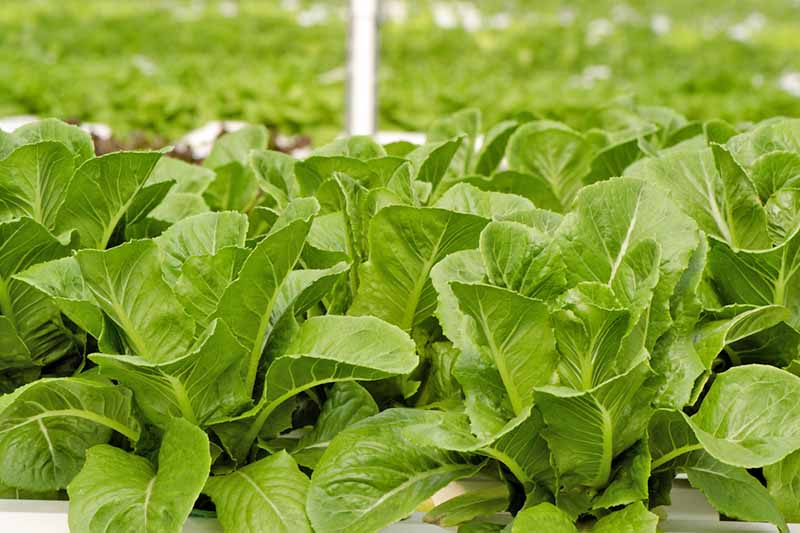
Crispy and crunchy, the outer leaves are typically a dark rich green with leaves of a more pale shade as you get closer to the center.
While they may not bolt right away as the heat sets in, they do tend to get bitter.
Out of all the homegrown varieties available, romaine is the most common today.
Again, heat tolerance and maturity rate vary between cultivars, but to get started check out ‘Paris Island’ cos, which is disease resistant and sweet to taste. Seeds are available from True Leaf Market.
To harvest, wait until the leaves in the center grow together and form an obvious elongated head. Then, with clean scissors or pruners, cut the entire plant off at the crown.
For all types, keep in mind that it’s best to wait to wash the leaves until you are ready to use them. Wrap loosely in plastic and store in the refrigerator for a few days if you need to, or harvest and enjoy immediately.
Some gardeners do prefer to wash their produce before putting it away, especially in the case of an insect infestation. Alternatively, it’s alright to wash, dry, wrap loosely in paper towels, and place in an open zip-top bag or a bowl in the refrigerator.
Crisphead
Crisphead lettuce is more difficult to grow than the other lettuce types and it has the lowest nutritional value.
They typically take a long time to mature, usually around 80 days, and are less heat tolerant than other types.

So unless you have a long cool season, you may not have much success with crispheads.
They form a tight, thin-leafed head. And they happen to transport and store better than all other types.
Iceberg is the quintessential crisphead. Personally, I think iceberg gets a bum rap and it’s become unfashionable to even admit that you like it.
If it weren’t for the much maligned iceberg, many of us who grew up in the city and continued to live there until the “foodie” revolution took off in the early 2000s would never have known a salad.
Crisphead ‘Webbs Wonderful’ seeds are available from True Leaf. This variety matures in about 72 days and has a higher heat tolerance.
Want More Choices?
There are lots of other options when it comes to growing your favorite greens. Check out more of our favorite lettuce cultivars here.
A Jump Start
With most of the tender crops grown in the home garden, you start seeds indoors while you wait for the ground to warm up.
It’s the opposite for lettuce. Seeds germinate best when soil temperature is between 55 and 65°F, but anything over 40°F is fair game.
So, you’ll want to sow seeds directly into the ground in the early spring, as soon as the soil is thawed and workable.
If you’re sowing seeds in August for a fall harvest, you’ll likely need to cool the soil down.
Try watering a section of the soil and then covering it with natural mulch, such as straw. In about a week, the soil should be significantly cooler in that area of the bed.
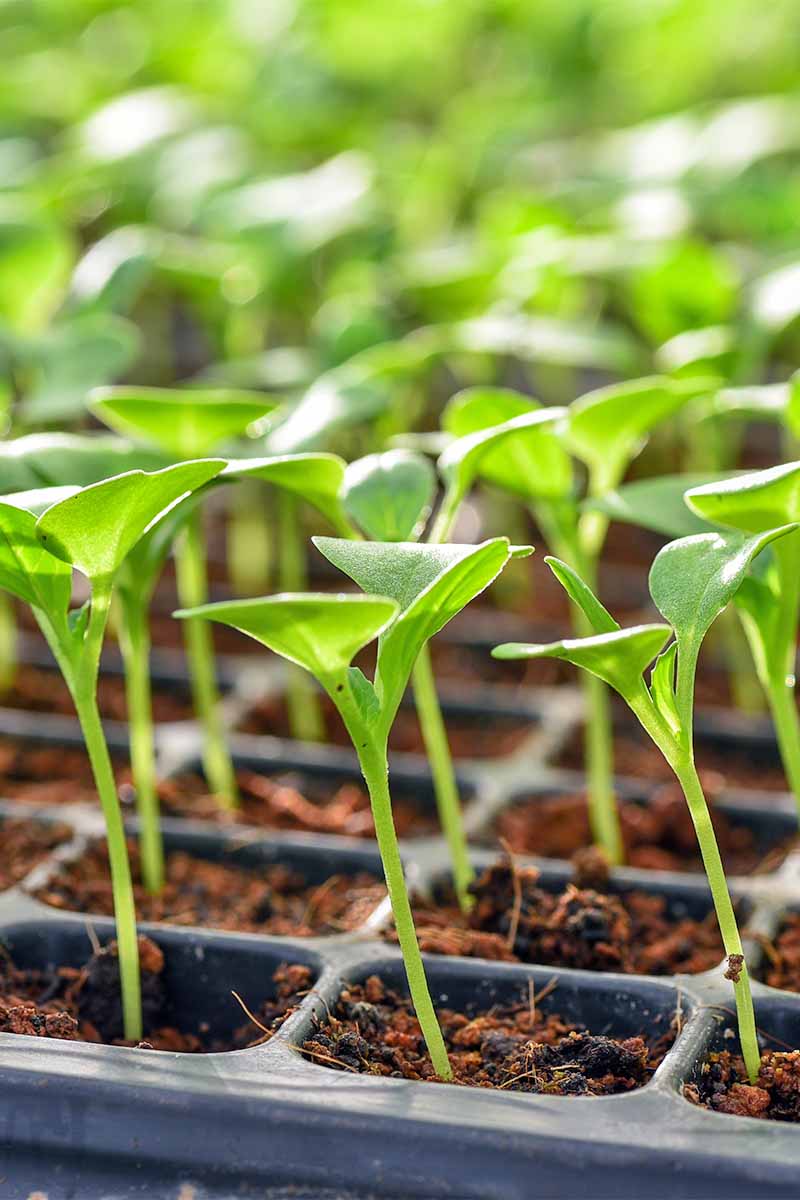
Since this leafy plant grows best in cool weather, it is ideal to have some seedlings ready to plant as soon as the soil is workable in early spring.
To start seeds indoors, fill a flat with a rich humus soil that has excellent drainage.
Cover the flat with plastic wrap until the shoots start peeking through the soil. Don’t transplant until your seedlings have one set of “true leaves.”
Whether sowing directly into the garden or starting seeds inside, plant the seeds 1/4 to 1/2 inch deep.
The seeds are very tiny and hard to handle, but try to get 4 to 5 inches between each seed. Don’t worry too much about spacing as you can always thin and eat the sprouts.
You’ll experience the highest productivity if the soil has a pH around 6-7.

Lettuce, especially loose leaf and quick maturing varieties, is a great crop to sow in succession for a more continuous harvest. Plant a new batch every 10-14 days so you will have plenty to harvest as long as the season stays cool.
Cover your seeds with a fine layer of soil and firm gently with the palm of your hand, to ensure contact between seed and soil.
Water carefully and keep the soil moist until germination.
As your seedlings grow, continue to water them with care. A spray bottle with a fine mister works great while they’re still inside.
The secret for rapid growth is frequent, light watering and giving each plant sufficient room.
When you transplant leaf, butterhead, and romaine types, try to keep the seedlings about 8 inches apart. Crisphead needs about 10 to 12 inches between seedlings.

When it’s time to transplant the seedlings, dig a small hole with your trowel and work in a healthy dose of rich compost.
Dribble water into the hole until it’s mucky.
Using a pencil or a pointy stick, lift the seedling from the flat, taking as much of the planting mix with it as you can.
Carefully hold the little guy with his leaves above the soil line and his roots in the hole, and push more soil around the roots. Using both hands, gently firm the soil around the seedling.
Mulching your seedlings will help keep their roots cool as well as cut down on weeds.
Lettuce has a shallow root system, so be careful when you’re cultivating around them or pulling weeds.
The Care and Feeding of a Salad
Over-watering to the point of sogginess is a recipe for disease. Once your seedlings are established, water when the top two inches of soil are dry.
Frequent and light watering is best. Many gardeners love to utilize a soaker hose for this.

Miracle Gro Premium Soaker Hose Kit
Add nitrogen rich fertilizer, such as fish emulsion for leaf growth. Fish emulsion along with a mixture of kelp is also packaged and sold via Amazon.

Neptune’s Harvest Organic Fish and Seaweed Blend Fertilizer
A layer of clean sand spread around the base of the plant will prevent the leaves from coming into contact with the damp soil. This is a great preventative measure against lettuce rot.
The hotter it gets, the more bitter your leaves will become. If it gets too hot and your lettuce hasn’t reached maturity, try shading the plants.
Shading your plants will help production last longer into the summer.
Sadly, if it gets too hot, your head-type lettuce won’t form heads.
The heat may cause your plants to “bolt” or go to seed. If that happens, harvest immediately and salvage what you can of the leaves.
Use taller crops, like tomatoes and corn, to shade your cool weather lovers.
As the heat-loving crops grow taller, they’ll provide shade and hopefully extend the harvest of your lettuce.
Fighting Pests and Disease
The most common pests that will bug your lettuce (pun intended) are aphids.
Aphids are tiny, sap-sucking insects and come in a number of varieties themselves. They are soft-bodied and appear in large numbers, usually lining up on the stem of a plant.
My favorite way to deal with aphids is with the firm blast of a hose.
However, there are other pests that are just as loathsome, especially when the weather warms.
Keep your eyes open for: flea beetles, leafhoppers, leaf miners, cabbage worms, loopers, army worms, and slugs.
Adult flea beetles, which look like tiny, shiny beetles, will chomp circular holes out of leaves.

The larvae of a number of pests are considered leaf miners and they eat visible, tunnel-like paths out of the leaves.
Most leaf miners live inside the leaf, so as soon as you see this type of damage, remove the affected material.
Leafhoppers pierce the plant, suck out the goods, and create a sort of white, stippling effect in the process.
And caterpillars, such as cabbage worms, army worms, and loopers, eat obvious, ragged chunks out of the meat of the leaves. These pests come on quickly and can easily make skeletons out of once luscious crops.
By far, young plants and new leaves are the most susceptible to pest damage.
Being a diligent observer is key to thwarting pest populations. In the coolness of dusk or dawn, go out and inspect your garden.
Turn over any leaves, keeping your eyes peeled for unwanted critters. Pick caterpillars and slugs off as you see them.
The problem with pesticides is that the leaves absorb anything you spray on them.
Making your own organic pesticide could be a solution, as is encouraging the proliferation of beneficial insects that hunt and eat these little suckers.
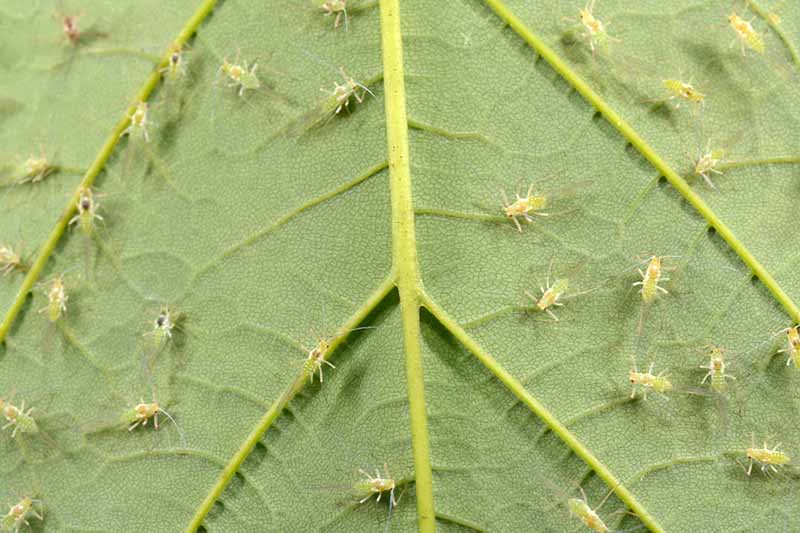
Another option to minimize pest damage is to separate lettuce plantings in different beds or areas of your garden.
Also consider using barrier plants, like chives, garlic, basil, and catnip, in between lettuce plants as a natural deterrent to aphids and other pests.
And, since the greens are the focus, you can actually grow lettuce under the protection of a row cover to keep unwanted pests to the ultimate minimum.
You can find more information in our related guide, “How to Identify and Control Common Lettuce Pests.”
Lettuce can also be afflicted with sclerotinia and mildew.
Again, healthy, well-draining soil with plenty of room between plants to allow for air circulation is the best prevention against moisture-related diseases.
Find tips on identifying, preventing, and treating lettuce diseases here.
Another common affliction is tip burn, which is caused by a change in moisture and often related to a calcium deficiency.
If the edges of the leaves turn brown and seem to “die back,” you’re probably facing tip burn.
The leaves are still edible, just clip off the damaged area and salvage the rest. There are some cultivars that are resistant to tip burn. If this is a concern, check seed packets for this quality when you are deciding what to purchase.
The Reward
Once you learn how to grow lettuce and you understand just how good it can taste, you’ll probably turn into a little bit of a “lettuce snob.”
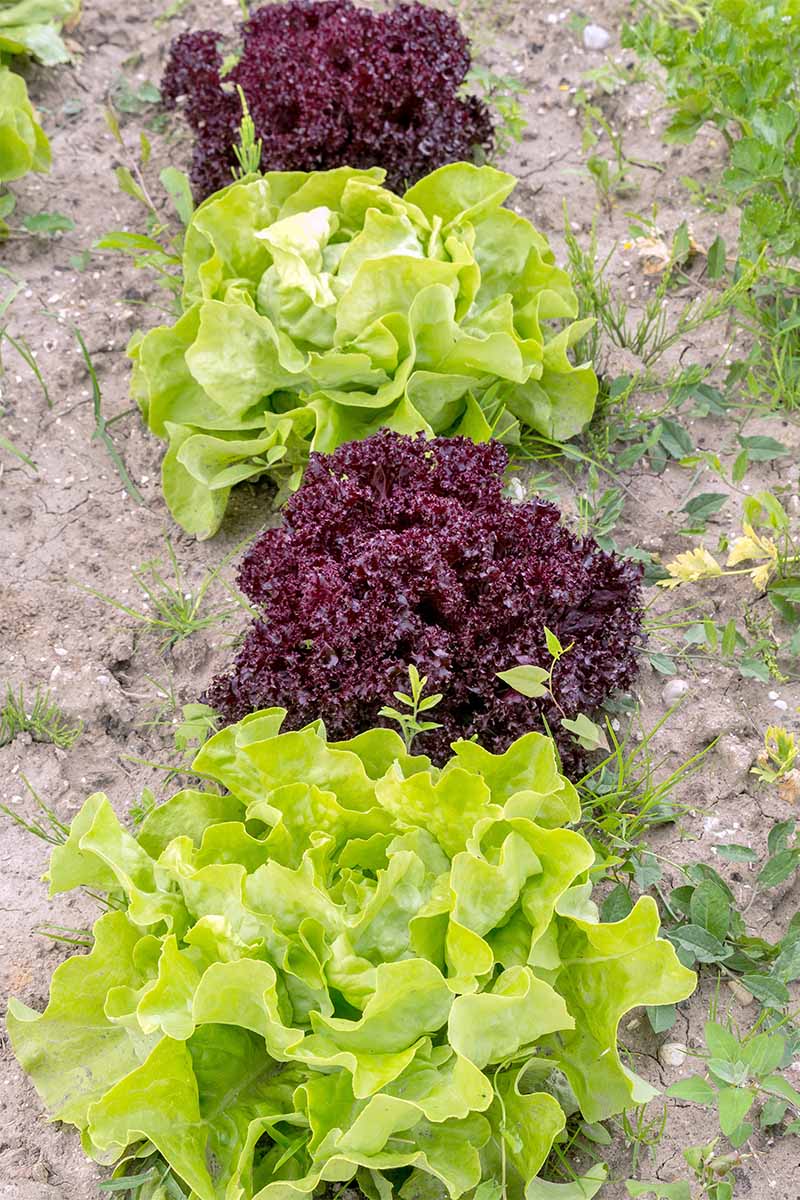
That means you won’t need a “loaded” salad anymore. Just the leaves, with an excellent vinaigrette dressing, and maybe a few added garden goodies like radish slices or fresh herbs.
What will you add to the garden this year? Share your lettuce secrets with us in the comments below!
Looking for more information on growing lettuce? Check out some of our other guides such as:
- How to Regrow Lettuce from Kitchen Scraps
- 29 of the Best Lettuce Varieties For Your Garden
- Plant Your Salad Greens Early: Tips for Growing Lettuce and Microgreens
Photo by Allison Sidhu © Ask the Experts, LLC. ALL RIGHTS RESERVED. See our TOS for more details. Product photos via True Leaf Market, Neptune’s Harvest, and Miracle-Gro. Uncredited photos: Shutterstock. Originally published by Mike Quinn on August 31st, 2014. Last updated on June 29th, 2018.
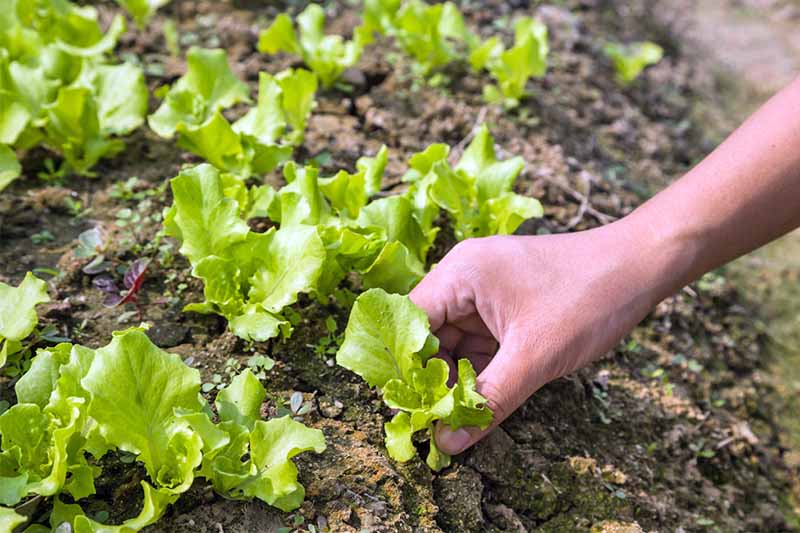
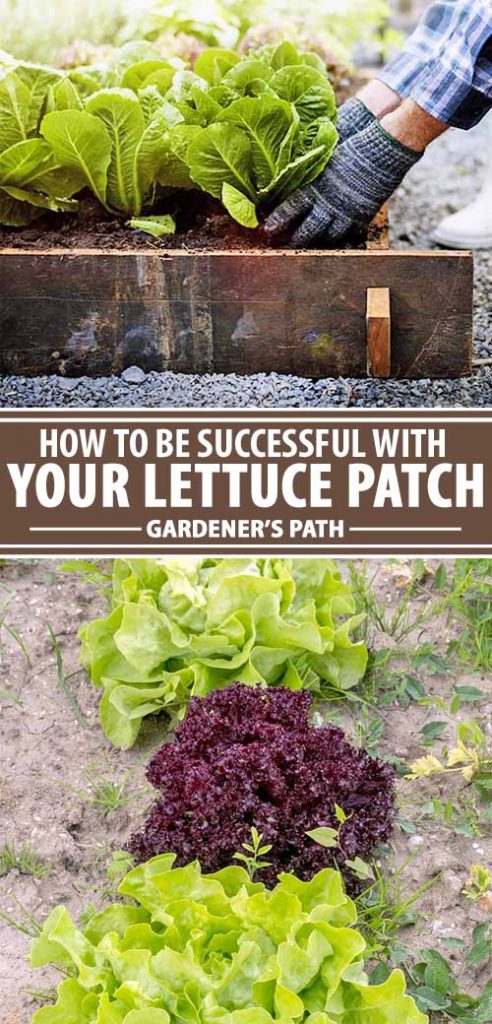

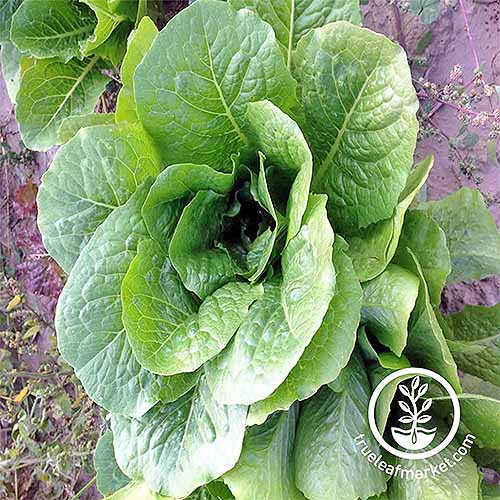
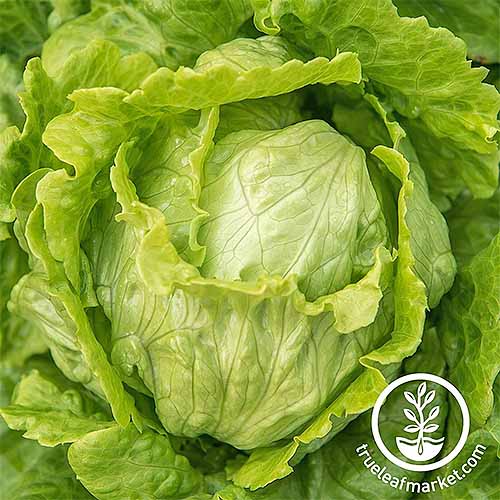
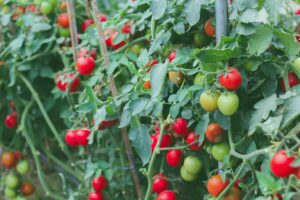
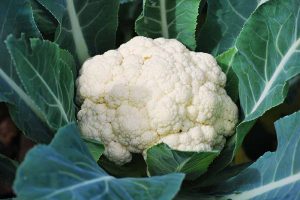
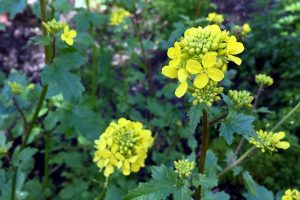
Good info & may i ask: If we can harvest(esp. the head-type*) & still let the seeds to go mature?
BTW:Wondering where(never seeing any on the net?!) the flower stalk comes from the head-type* lettuce(eg. iceberg)? Thanks in advance!
You can, Adam, particularly the loose leaf variety. Harvested head types may continue growing and produce flower stalks as well, as long as a few inches of the base remain in the ground. Reserve a few plants for seed saving, and allow those to bolt and produce flowers. The remaining leaves will tend to become bitter with a less appealing texture, but sometimes that’s the price of seed saving. I’m doing the same with my own raised bed of leafy greens right now – the mustard and arugula that bolted at the end of winter were allowed to flower and… Read more »
I’m new to growing lettuce. I have LOTS of young sprouts that are actually very tasty. But I live in Florida and it’s starting to get hot. What do I do now?
So glad to hear that your first crop has been successful, Alice! Baby greens are a delicacy! Unfortunately, hot weather means your lettuce crop is likely to bolt, and transitioning the plant’s energy to flower and seed formation leads to bitter and tough greens. I like to cover my plants with a shade cloth when the weather heats up, and provide extra irrigation as needed. Pinching back any plants that are starting to bolt can help to prolong the season as well. And in future seasons, you might like to look for “slow bolt” varieties that will remain productive longer… Read more »
I usually plant my leaf lettuces recklessly, but I was interested in indoor starts as the ground won’t be ready for several more weeks here in Alaska. I read this article for ideas of how to start indoor lettuce planting and was pleased that you provided a lot of helpful information. I am looking forward for a more plentiful reaping as I will make some changes. I am thankful for the pointers that i have learned. Quyana, Yup’ik language for Thank you.